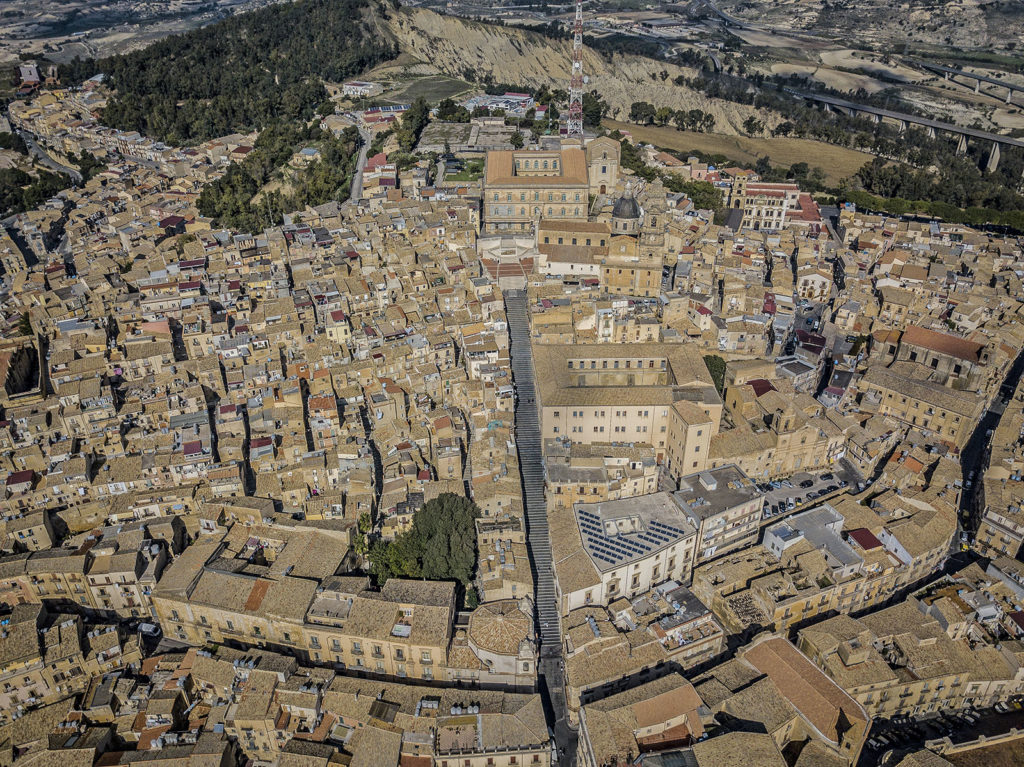The city of Caltagirone has very ancient origins; the first traces of settlements date back to the Neolithic age. Thanks to its strategic position on the fertile plain of the Hyblaean mountains, it became a destination for the Normans and the Greeks and Romans before them.
The city, which has always been very active, began its urban renewal even before the catastrophic earthquake of 1693. At the end of the 16th century the city was expanding.
The mother church and the castle were the focal point of the city, but with the construction of new districts it was necessary to build specific connecting roads.
In this way, roads were inserted to connect the area of San Giorgio with that of San Giacomo from east to west, and from north to south between the mother church and the southern quarter.
It was during this time that the extraordinary Scalinata di Santa Maria del Monte (Staircase of St. Mary of the Mountain) and the bridge of San Francesco were built, both highly coveted by the Franciscans. Seen from above, the town’s new configuration was shaped like an eagle: the head was the former castle, the wings the quarters of San Giacomo and San Giorgio, and the tail the quarter of San Francesco.
